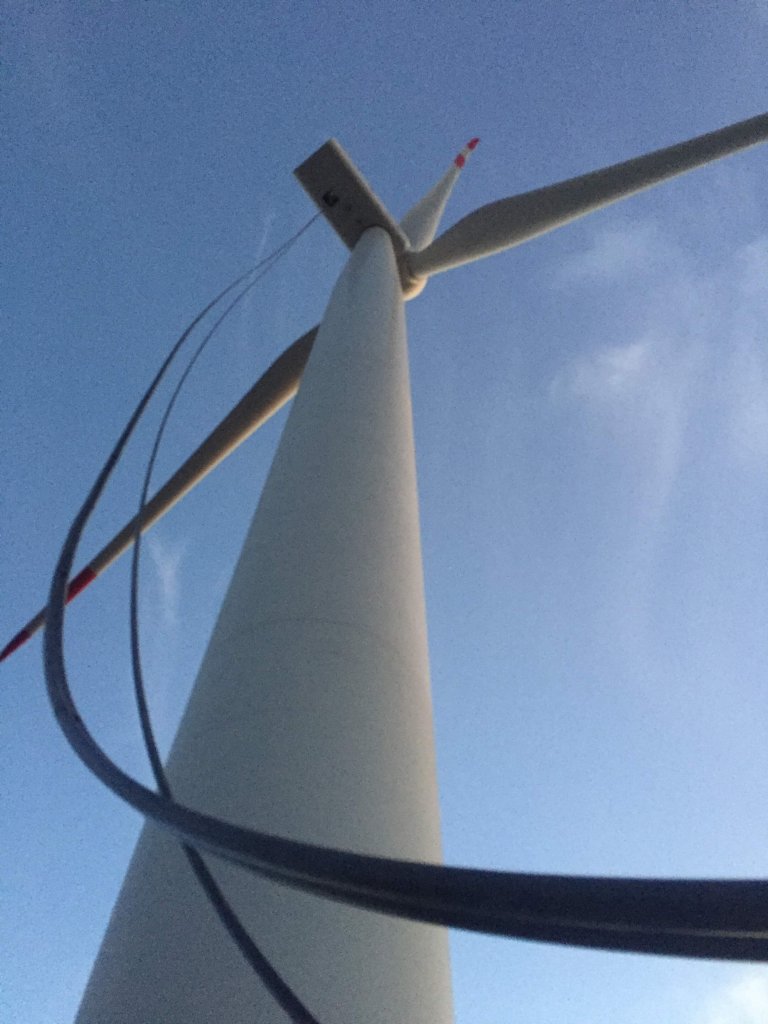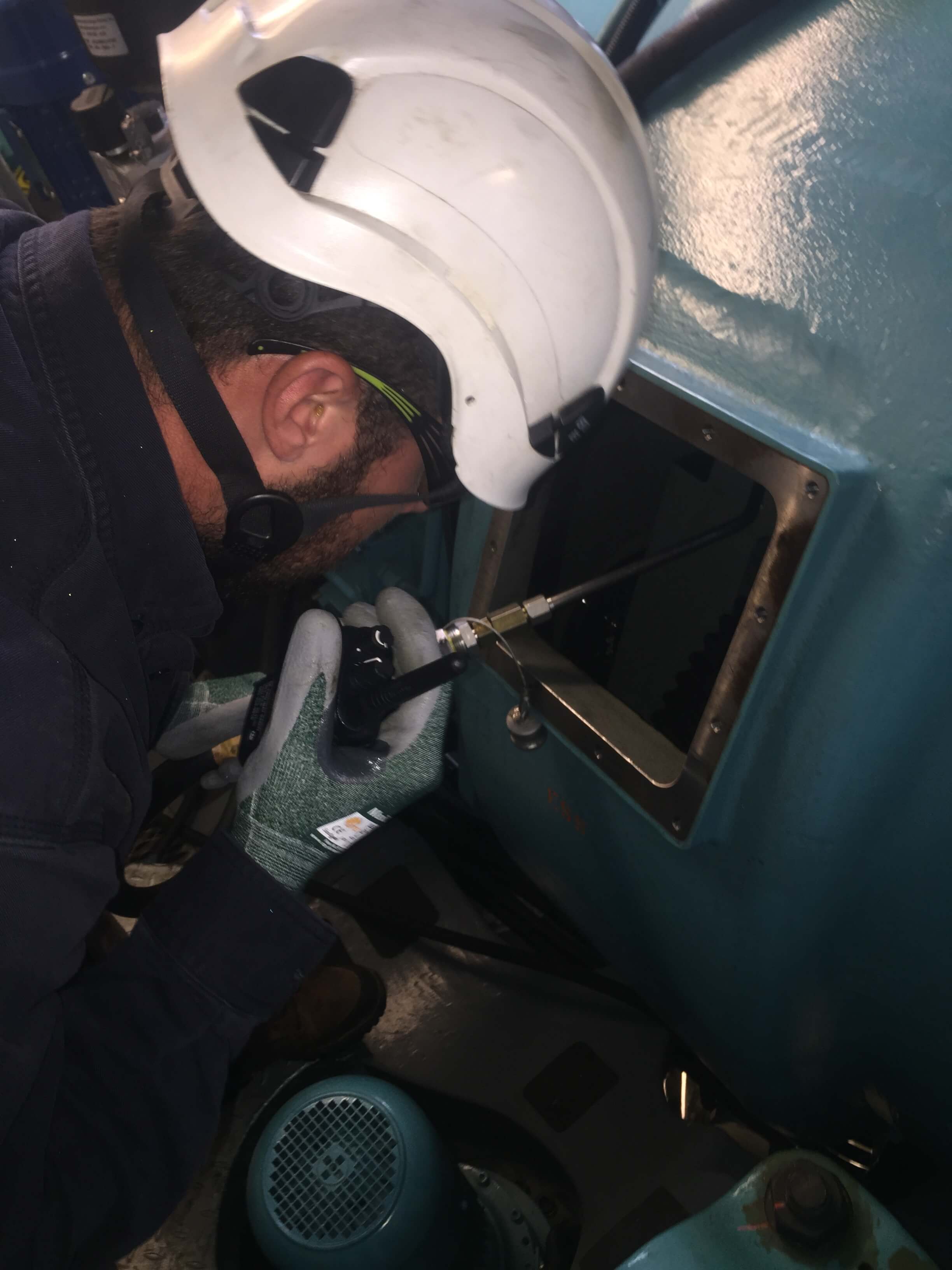
However, the harsh operating conditions turbines endure — including variations in wind speed and direction, vibration, temperature, debris, and moisture — present a challenge to even the most advanced gearboxes.
One key to minimizing the effects of such conditions and optimizing gearbox health is lubrication, which reduces friction by protecting metal surfaces from corrosion while keeping the gears clean. Given the tough operating conditions and remote location where most wind farms are located, however, choosing the ideal oil formulation has typically been easier said than done.
Fortunately, lubricant quality and analysis have advanced substantially in recent years, which has led to more reliable formulations and testing. This, in turn, has directly impacted turbine O&M, downtime and saved costs.
The three keys
“For a high-performing gearbox, there are a few key features that all wind-farm owners or operators should look for in a lubricant,” shares Brian Burks, a senior wind-turbine field applications’ engineer with AMSOIL, a manufacturer of industrial lubricants and filters.
Here are three qualities to look for in gearbox oil:
1. Performance.The harsh environments wind turbines operate in are unlike other industrial equipment, so lubricants must be carefully engineered to perform over time. There are no cutting corners here to save short-term costs. “Choose a high-performance gear oil that provides excellent anti-wear characteristics, superior anti-foam performance, repels water, and maintains its viscosity,” advises Burks.

A special hose is used to move oil safely up or down a wind-turbine tower for oil drains or refills in the gearbox.2. Longevity. “Modern, well-engineered gear oils are reaching a decade of continuous use in the field,” he says. “However, such longevity should never come at the cost of added maintenance with continued top-treats of additives to correct a decrease in performance.”
Top-treating gearbox oil, by adding depleted additives, is one way that wind maintenance teams have attempted to mitigate lubricant degradation and extend oil life. The concern with top treating is it may introduce new contaminants or affect the formulation of a balanced oil, which could ultimately impact gearbox performance.
“Wind turbine gear oil should provide persistent performance and protection over its claimed lifetime,” says Burks.
3. Support. A quality lubricant should be backed by an equally quality supplier. “Wind is a unique industry that requires specific knowledge and skills to solve the problems that it presents. You should be able to lean on your wind-turbine lubricant supplier to support your needs in the field and up-tower at the point of lubrication,” says Burks.
Oil analysis and O&M
No matter how well-balanced a gearbox’s oil formulation, regular O&M is essential to test that lubrication is performing optimally and plan for the necessary oil-drain intervals.
“In many other applications, an oil may be condemned due to oxidation, but quality gear oil will fail to oxidize in a turbine gearbox because of the relatively low temperatures the oil encounters,” explains Burks. “So, an operator is more likely to condemn the oil based off of contaminants.”
Typical oil contamination parameters to watch out for include:
• Viscosity
• Total acid number
• Water
• Iron
Particle counts
Burks notes that anti-foam performance may also degrade in some oils over time so if there is more foam than typical in gearbox oil, it may be time for a change. Higher quality gear oil has increased drain intervals from what was three to five years to seven to 10 years or more.A wind tech sprays down the high-speed helical section of a wind-turbine gearbox during an oil change.
According to Burks, the first step for taking an oil sample is to use a “super clean” or “ultra clean” sample bottle. These bottles come sealed and guaranteed to be cleaned of most particles that could throw off a particle count. Next, it’s important to follow a proper oil sample gathering procedure.
“To obtain a representative sample it should be taken within 30 minutes of turbine shutdown to make sure particles and contaminants are evenly distributed,” he says. “The sample size is dependent on what tests are being performed but, for most routine analysis, a 4 oz sample is sufficient.”
Follow these sample steps:
Take the sample from a sample port between the oil pump and the oil filter — but purge the sample port properly before taking the sample. “A conservative rule of thumb is to pull 4 oz of purge before taking a 4-oz sample,” says Burks. “This ensures the sample port is cleaned of any debris and stagnate oil.”

When the purge is complete, swap in the sample bottle midstream and hold the sample line vertical while taking the sample. (The sample is complete when the sample bottle is approximately 70% full to allow plenty of room for a lab technician to adequately agitate the sample before performing analysis.)
Properly seal and label the sample and immediately ship to your laboratory.
If time is of the essence, pre-source a laboratory that is geographically close to the wind farm.
Conventionally, in the wind industry, a turbine’s oil sample was drawn and analyzed every six months or so (which is much less frequent than other industries with similar critical assets simply because of the remote location and relative inaccessibility of turbine gearboxes.) However, that’s changing because of better monitoring systems.
“Most operators now stray away from time-based interval changes and rely on condition-based monitoring programs. This means they only change gearbox oil when laboratory analysis indicates it is necessary,” says Burks. Advanced condition-based monitoring technology that offers real-time elemental analysis and particle counting can support this process.
“These systems are capable of reporting additive levels, particle counts, and iron levels in the oil, and sometimes vibration data. This means wind owners and operators can obtain valuable, real-time data that can also be correlated with other variables, such as wind events or other data drawn from SCADA,” he explains.
With routine oil analysis, the result is only a brief snapshot in time that may miss certain indications of wear. “But with continuous condition-monitoring data flowing in, it’s possible to see the bigger picture,” says Burks. “This is particularly helpful for identifying gearbox health problems in addition to monitoring oil health — and should, ultimately, save time, O&M costs, and increase healthy turbine operations.”
Routine gear oil analysis is critical to monitor levels of contamination. Choose oil that can handle finer filtration (5 to 10-micron filters for full-flow inline applications, and 3-micron filters for fine offline filtration) for increased performance and lower contamination levels.
Did you know?
Filter reliability in wind turbines is unrelated solely to the filter itself, and typically reflects the quality of the oil that’s filtered.

“Some oils, particularly those affected by water, can have problems with additive removal from a filter, which damages the oil and reduces filter life,” explains Brian Burks, an applications engineer with AMSOIL. He says this leads to a plugged filter and reduced oil performance and life. “This problem can be worsened with fine filtration unless the gearbox oil is specifically formulated for it.”
Burks recommends using a filter with a reliable bypass system to catch large debris in the case that the normal pleats become clogged for some reason. “Magnets in filters tend to do a good job at removing even more ferrous metal particles,” he adds.